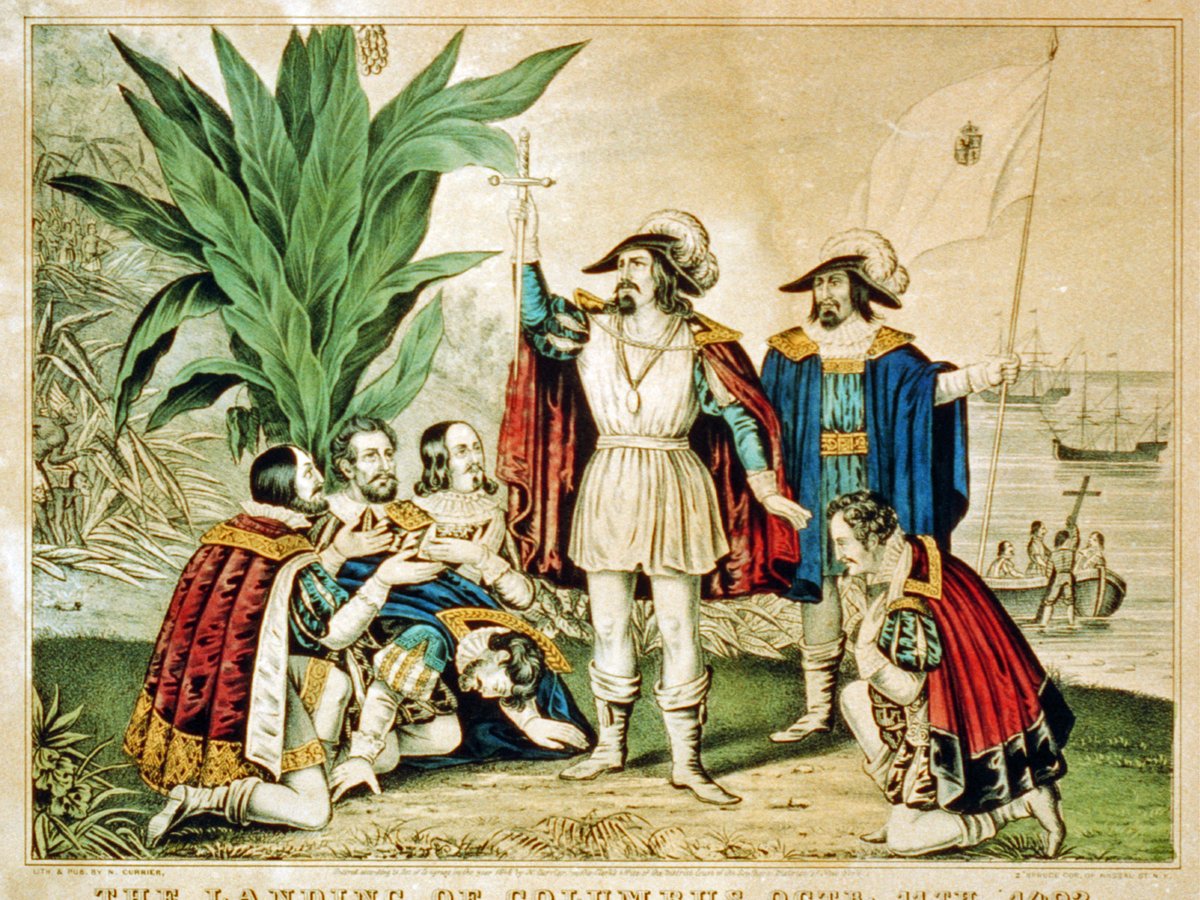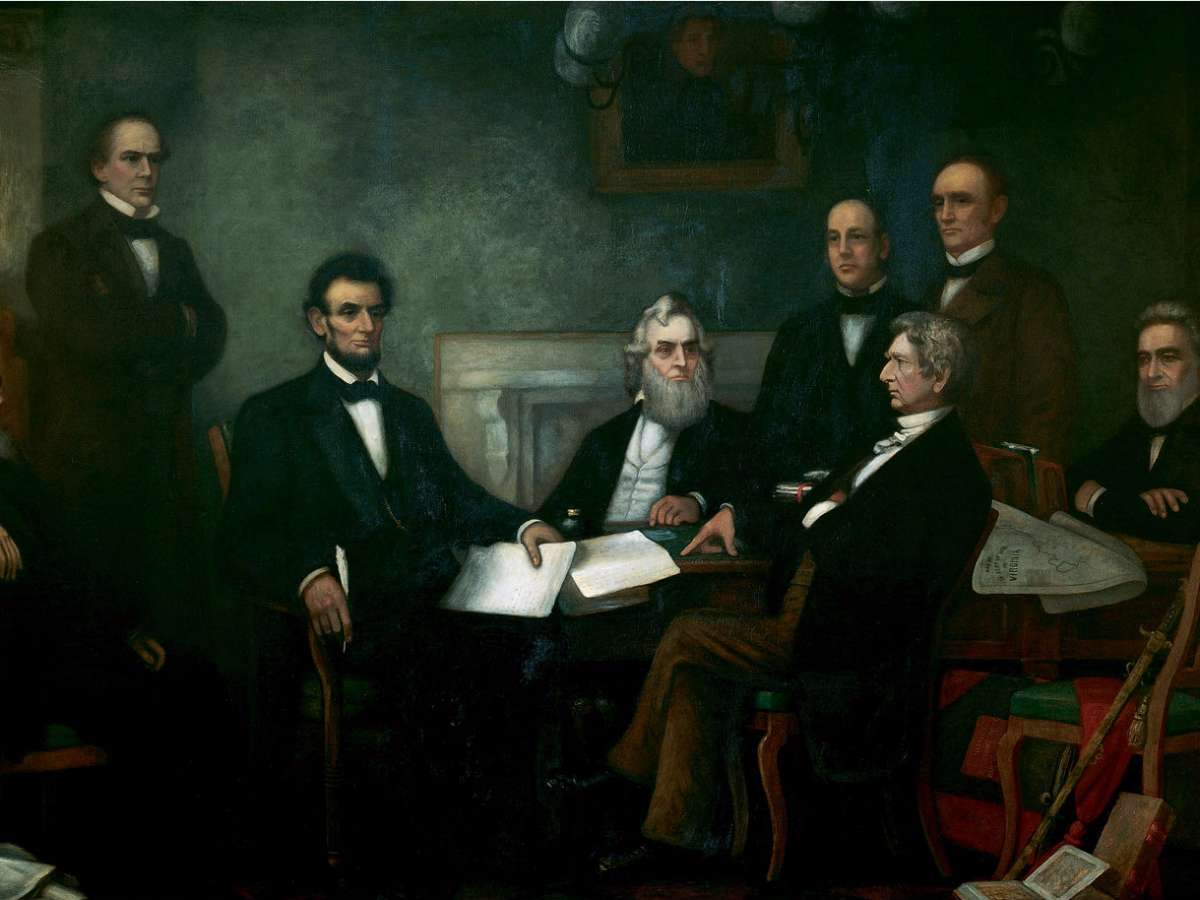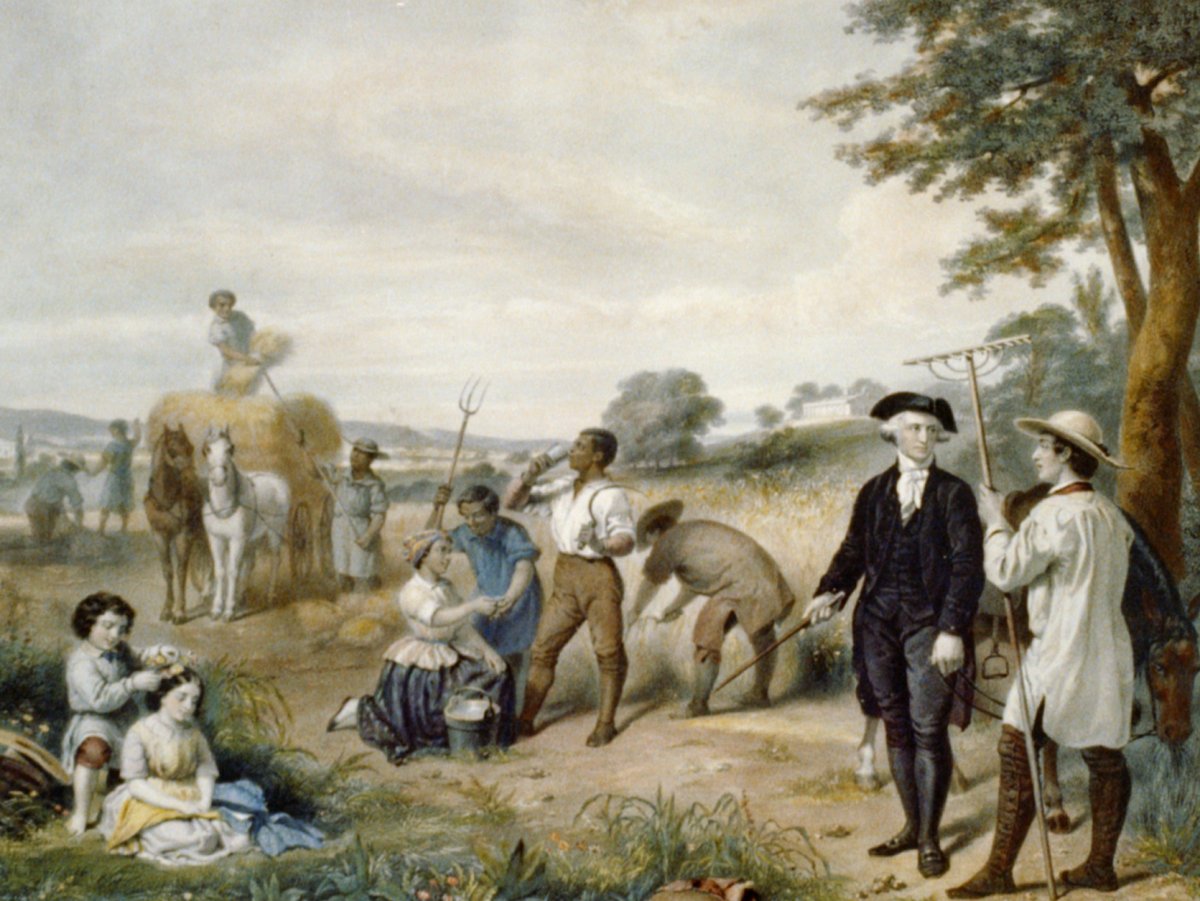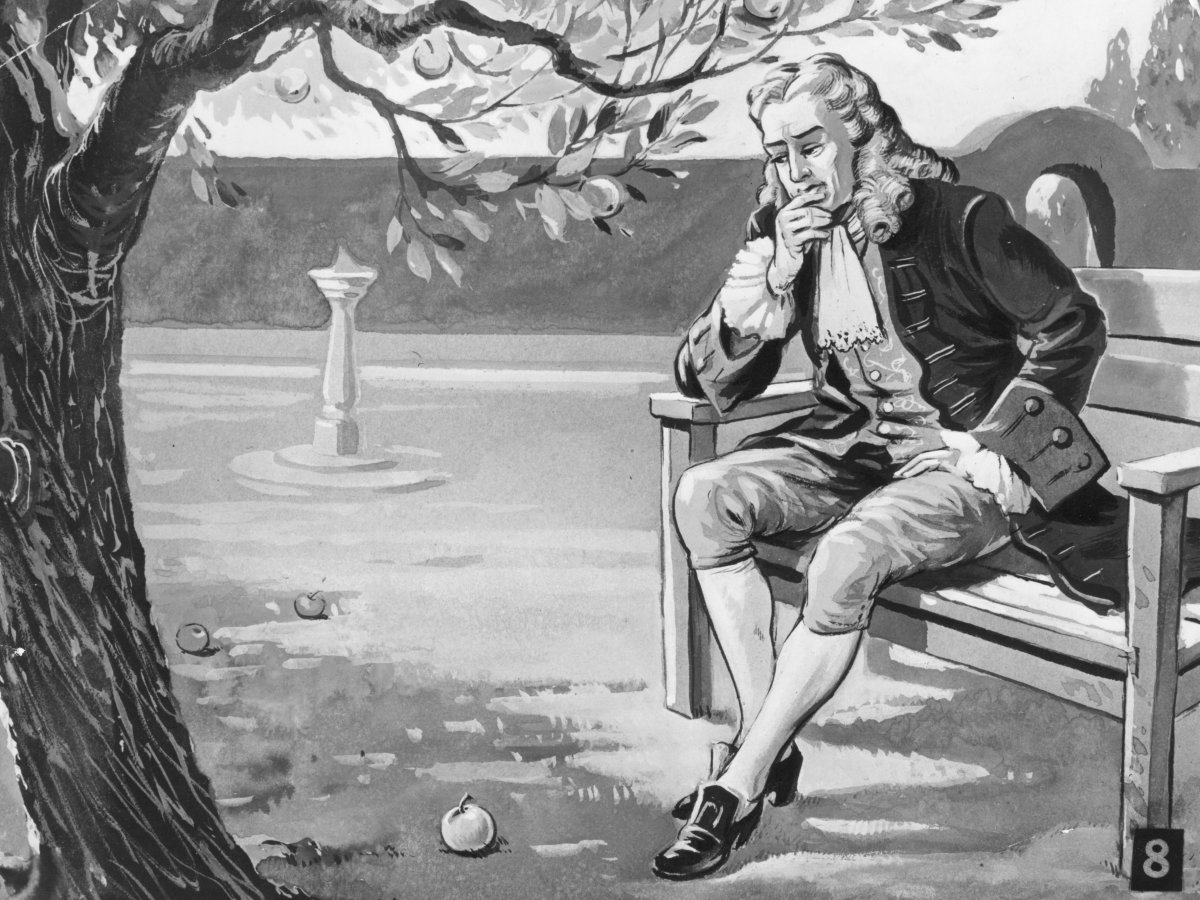 Yes, bees can fly.sumikophoto/Shutterstock
Yes, bees can fly.sumikophoto/Shutterstock
When you're trying to teach dozens of students the finer points of history and science, sometimes it's just easier to provide a simpler narrative.
But as James Loewen chronicles in his classic book "Lies My Teacher Told Me: Everything Your American History Textbook Got Wrong," teaching simplistic narratives of history doesn't do anyone any good.
The same issue exists in other subjects as well. No, Isaac Newton didn't "discover" gravity when an apple fell on his head. And yes, Pluto is still a planet — it's just a special kind of planet.
Like many myths, these stories often have a kernel of truth to them — it just isn't what you learned. Here are 14 things you may have learned in school that have since been proven wrong:
MYTH: Chameleons change colors to camouflage themselves.

In pop culture, chameleons are thought of as spiky lizards that change their skin to fit any color or pattern in their surroundings. This belief makes them metaphors for things like disguisable military technology and talented actors.
But while their color-changing abilities are prodigious, they mostly use it to maintain a certain body temperature and as a way to communicate with other chameleons, not to hide from predators.
In any case, cuttlefish are much better at changing colors to fit their surroundings.
MYTH: Christopher Columbus discovered America.

The belief that Christopher Columbus discovered America is apparently widespread. In a 2005 survey from the University of Michigan, 85% of Americans believed that Columbus discovered the continent while only 2% of respondents were able to correctly answer that Columbus couldn't have possibly discovered America because Native Americans already lived here.
In any case, the first European to land in America is widely accepted by historians to be the Viking explorer Leif Erikson, who sailed from Greenland to Newfoundland in Canada in around 1,000 A.C.
Columbus is historically significant because, in his 1492 voyage to the Americas, he brought diseases that killed a massive portion of the Native American population — some suggest as much as 90% — and paved the way for European imperialism in the Western Hemisphere.
MYTH: You can only taste certain things on certain parts of your tongue.

According to the tongue map myth, different parts of your tongue are for different sorts of tastes. The back of your tongue detects bitter tastes, the front takes in sweet tastes, and so on.
This is wrong. Taste receptors are all over your tongue, and they all pick up all kinds of tastes.
It's true that some taste buds are more receptive to certain kinds of tastes than others, but the difference is slight, according to the University of Florida Center for Smell and Taste, and the locations of those taste buds aren't in accordance with the "tongue map."
MYTH: Abraham Lincoln freed the slaves.

The historical interpretation of Lincoln emancipating slaves in the United States isn't so wrong as it is simplistic. In that narrative of history, Lincoln fought the Civil War over slavery, and the Emancipation Proclamation and Thirteenth Amendment of the United States Constitution were his legal tools for ending slavery.
But that narrative displaces slaves from the center of the narrative and focuses only on the actions of one white man. While Lincoln, significantly, chose to wage the Civil War rather than not, and took legal steps to grant former slaves citizenship, slaves themselves struggled for centuries to be recognized as people under the law and escape their bondage.
"Lincoln moved more slowly and apparently more reluctantly toward making it a war for freedom than black leaders, abolitionists, radical Republicans, and the slaves themselves wanted him to move," James McPherson, a Civil War historian, wrote in "Who Freed the Slaves?"
MYTH: Slavery was confined to the South.

America always had its abolitionist movements, but slavery existed in every colony. Massachusetts, in the northern United States, was the first colony to legalize slavery. And in 1720, around a fifth of New York's population were slaves. George Washington and Thomas Jefferson, among other founding fathers, owned hundreds of slaves.
It wasn't until after the Revolutionary War that the abolitionist movement began to be a significant political force. At that point, it was up to each individual state to outlaw slavery. Vermont was the first state to abolish the institution, and more northern states followed soon after that. By the Civil War, it was only the states under the Mason-Dixon line that hadn't abolished slavery.
MYTH: Sir Isaac Newton "discovered" gravity when an apple fell on his head.

Newton's apple legend isn't true, but like many urban legends, it's an embellished version of something that actually happened. An apple didn't fall on Newton's head, but Newton did start theorizing about gravity when he saw an apple falling from a tree and started thinking about it.
The very event was inscribed in Sir Isaac Newton's memoir, where he recalls going outside after dinner with a friend.
we went into the garden, & drank thea under the shade of some appletrees, only he, & myself. amidst other discourse, he told me, he was just in the same situation, as when formerly, the notion of gravitation came into his mind. "why should that apple always descend perpendicularly to the ground," thought he to him self: occasion'd by the fall of an apple, as he sat in a comtemplative mood: "why should it not go sideways, or upwards? but constantly to the earths centre? assuredly, the reason is, that the earth draws it. there must be a drawing power in matter. & the sum of the drawing power in the matter of the earth must be in the earths center, not in any side of the earth. therefore dos this apple fall perpendicularly, or toward the center. if matter thus draws matter; it must be in proportion of its quantity. therefore the apple draws the earth, as well as the earth draws the apple."
Of course, today our account of physics is far more precise than Newton's notion of gravity. He didn't account for General Relativity, theorized by Albert Einstein more than 200 years after Newton died, and developing ideas in Quantum Mechanics problematize Newton's theories even more.
MYTH: Albert Einstein failed math in school and was a terrible student.

It's an attractive idea for young kids. Maybe you're bad at school, but you can still bloom as a genius later in life.
While examples of late-blooming talents are everywhere, Einstein isn't one. He was an excellent student in math — and everything else — when he was younger.
The myth that he flunked a math class may be from when he failed the entrance exam to the Zurich Polytechnic. But he was still a couple of years from graduating high school at the time, and he didn't speak a lot of French, the language the exam was given in. Furthermore, he passed the mathematics section, but failed the language, botany, and zoology sections.
There are many other myths about Einstein that are untrue. For example, he learned to read early (not late) in life and he probably didn't have a learning disability.
MYTH: Diamonds are made from ultra-pressurized coal.

Both coal and diamonds are formed from carbon under the surface of the Earth, which is where the myth comes from. But the carbon that forms diamonds is much more pure, and the process requires much more heat and pressure.
MYTH: According to all known laws of aviation, there is no way a bee should be able to fly.

As the myth goes, its wings are too small to get its fat little body off the ground. The bee, of course, flies anyway because bees don’t care what humans think is impossible.
This is, of course, wrong. Bumblebees can fly. The idea may have traction because bumblebees are pretty big — they weigh about a gram — and their wings are pretty small — about a square centimeter.
But there's a difference between a real-life biological being and a mathematical model of it. Honeybees fly basically by flapping their wings really, really fast, which is the most efficient type of flapping when something needs to carry heavy loads, like honeybees often do.
MYTH: Convicted witches in the United States were burned at stake.

While convicted witches in France were burned, witches in England were hanged instead. The English tradition made its way to the American colonies during the Salem Witch Trials and other places of anti-witch hysteria.
With one exception, all the convicted witches who went to their death were hanged, according to Stacey Schiff, the Pulitzer Prize-winning author of "The Witches: Suspicion, Betrayal, and Hysteria in 1692 Salem."
That sole exception is Giles Corey, who was pressed under large stones.
MYTH: Pluto is no longer considered a planet.

The International Astronomical Union (IAU) — the scientific body that decides the scientific definition of a "planet" and stuff like that — originally classified Pluto as the ninth planet that orbits the sun.
In 2005, Eris, another really big space rock that orbits the sun, was discovered. It's 27% larger than Pluto, so it sent the IAU back to the drawing board to decide what a planet actually is.
The IAU ended up with criteria that neither Pluto nor Eris met, so neither could be one of the major planets that go around the sun.
Instead, the two are considered dwarf planets. So yes, Pluto is a planet, it's just a dwarf planet.
MYTH: The Great Wall of China is the only man-made structure that can be seen from space.

First of all, it's worth noting that while man-made structures like the Great Wall are visible from satellites orbiting Earth, they're not visible at all from, say, the moon.
"The only thing you can see from the moon is a beautiful sphere, mostly white, some blue and patches of yellow, and every once in a while some green vegetation," Apollo 12 astronaut Alan Bean told NASA. "No man-made object is visible at this scale."
Secondly, the structures you can see largely depend on the weather and how far from our planet you actually are. In 2003, a Chinese astronaut even admitted he couldn't see the Great Wall from space, because the weather conditions weren't right.
Given the proper conditions, astronauts in the International Space Station can see major cities, the Great Pyramids of Giza, and some big bridges from space.
MYTH: Raindrops are tear-shaped.

As the United States Geographical Survey website notes, raindrops are shaped more like hamburger buns or beans. When they get really large, they split in two. Only then do they turn into a teardrop shape — only to quickly become burger buns again.
MYTH: You can't start a sentence with a conjunction.

You've probably been taught in school that you can't start sentences with "and" or "but." But you can. I've done it several times in this article. And it's completely fine.
Some grammar rules in the English language are unbreakable (yet are broken anyway), but the important thing to remember is that different publications have different house styles. INSIDER has its own style, based on the one set forth by the Associated Press, while The New York Times has its own, as do publishing companies like Penguin Random House. Each publication will set its own rules about grammar, like deciding whether to permit starting sentences with conjunctions, or allowing sentences to end with a preposition.
Read the original article on INSIDER. Follow INSIDER on Facebook. Copyright 2017. Follow INSIDER on Twitter.




